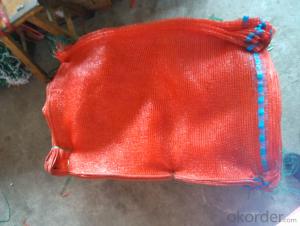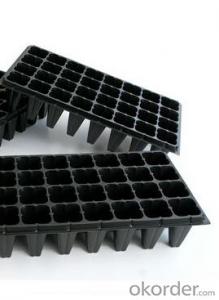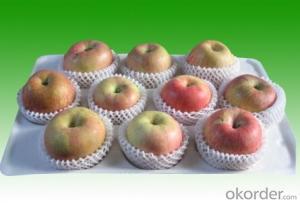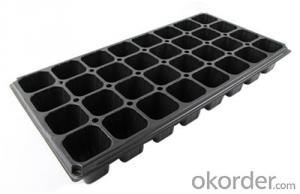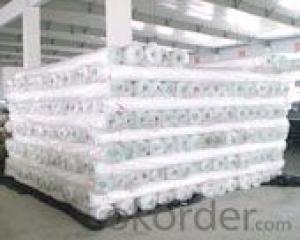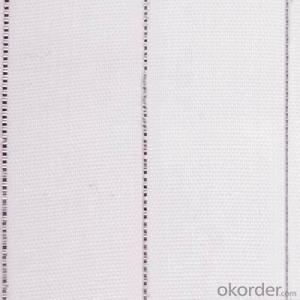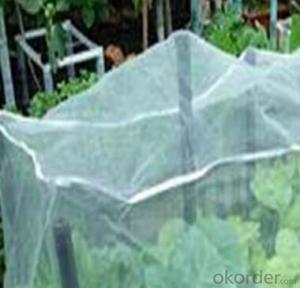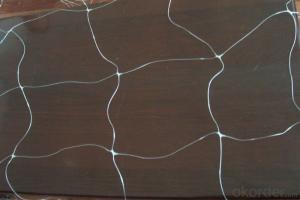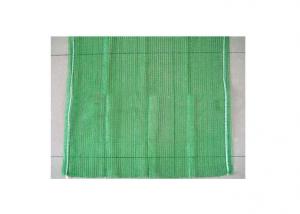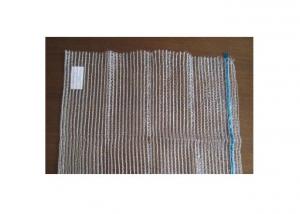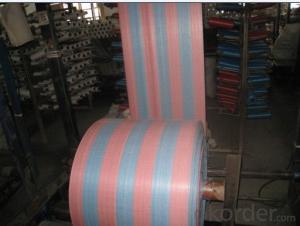Anti Insect Net different 100% HDPE new material
- Loading Port:
- China Main Port
- Payment Terms:
- TT OR LC
- Min Order Qty:
- -
- Supply Capability:
- -
OKorder Service Pledge
OKorder Financial Service
You Might Also Like
Introduction of ANti insect net:
It is weaved byHigh-density polyethylene (HDPE) UV stabilized mono filament, and is widely usedin greenhouse construction.Specifications:
Material base fabric | Fabric Weight | Uv. Content | Temperature range |
HDPE | 80gsm up to 200gsm Standard Weight: 80gsm, 110gsm, 125gsm | 0.3% or 0.5% | -40 ~ +80oC |
Width: 1m, 1.5m,2m (can be joined to 10m)
Length: 20m, 50m,100m
Color: Black, Green, DarkGreen
Minimum life length: 4 years, under normalweather conditions and use.
Applications of Anti insect net for green house:
- Being aneffective protection against insects like white fly, etc.
- Helpingreduce the use of phytosanitary products against insects/plagues.
- Allowingmaximum ventilation in hot seasons.
- Q: i have fished like for 7 years but have never used plastic worms how do u fish them?
- if there is a bass where you throw it, it will gobble that thing up before you even begin to reel in. just give it a bit to sink in a good spot, thats all it takes. crappie like them too, but sometimes they only get a hold of the tail and not the hook, so you end up losing tails. no tail you just throw away the lure and put a new one on.
- Q: What are the advantages of using biodegradable plastic seedbed mats in agriculture in terms of environmental impact?
- <p>Biodegradable agricultural plastic seedbed mats offer several environmental benefits. They help reduce plastic waste by decomposing naturally over time, thus minimizing pollution. These mats also improve soil structure, which can lead to better water retention and reduced runoff, protecting water sources from contamination. Additionally, they can suppress weeds without the need for harmful herbicides, reducing chemical pollution and promoting biodiversity. By providing a protective cover, they can also reduce the need for synthetic fertilizers, further decreasing environmental impact. Overall, the use of biodegradable seedbed mats contributes to sustainable agriculture by lessening the ecological footprint of farming practices.</p>
- Q: Can nursery trays be used for starting indoor plant seedlings?
- Yes, nursery trays can be used for starting indoor plant seedlings. They provide a convenient and organized way to start multiple seedlings in one container. The trays are typically designed with individual cells or compartments, allowing each seedling to have its own space to grow. Additionally, nursery trays often come with a transparent lid, which creates a mini greenhouse effect and helps retain moisture, creating an ideal environment for seed germination and early growth.
- Q: Are nursery trays suitable for starting plants for reforestation projects?
- Yes, nursery trays are suitable for starting plants for reforestation projects. These trays provide a controlled environment for seedlings to germinate and develop roots before they are transplanted into the reforestation site. The trays also allow for easy transportation and handling of seedlings, making them a practical choice for large-scale reforestation efforts.
- Q: I want to fill molds with plastic so I can make plastic objects. What home craft plastic material I can use to do this?
- Let's okorder /
- Q: How do you control ground cover plants that become too aggressive?
- There are a few effective methods to control ground cover plants that become too aggressive. One approach is to manually remove or thin out the excess growth regularly, cutting back the plants to maintain their desired size and prevent them from spreading too much. Another method is to create physical barriers, such as using edging materials or installing underground barriers, to restrict the roots from spreading beyond a specific area. Additionally, selective herbicides can be used, but they should be applied carefully and according to the specific plant's tolerance. Proper maintenance and monitoring are crucial to keeping aggressive ground cover plants under control and maintaining a balanced garden ecosystem.
- Q: what is in common with crude oil separation and the production of plastics.
- Plastics generally start with crude oil distillation products
- Q: If you look at some recent photos of 2ne1, Bom's chin looks pointy as if she may have had a botched plastic surgery procedure done on her chin. She is so pretty, why do you think that Bom is having all of these plastic surgeries done to herself when they are harmful?Why are CL, Dara, and Minzy not doing anything to stop her?
- Park Bom Plastic Surgery
- Q: This question asks for the primary origins of plastic waste in agricultural settings.
- <p>The main sources of agricultural plastic waste include plastic films used for mulching, greenhouse films, plastic nets, and containers for planting and storage. Plastic mulch films are extensively used for weed control and moisture retention, leading to significant waste once they degrade or are replaced. Greenhouse films, which are crucial for controlled environment agriculture, also contribute to waste as they have a limited lifespan and need periodic replacement. Additionally, plastic nets used for crop protection and plastic containers for seedling and produce storage contribute to the overall agricultural plastic waste.</p>
- Q: How do you prevent ground cover plants from becoming a fire hazard in dry climates?
- In dry climates, preventing ground cover plants from becoming a fire hazard can be achieved by following a few key measures. Firstly, it is important to choose fire-resistant ground cover plants that are less likely to ignite and spread flames. Secondly, regular maintenance is crucial, including pruning away dead or dry foliage, removing excessive plant material, and regularly watering the plants to keep them hydrated. Additionally, creating a fire break by incorporating non-flammable materials such as gravel or rocks around the ground cover plants can help reduce the risk of fire spreading. Lastly, practicing proper disposal of yard waste, like dried leaves or grass clippings, can further minimize the potential fire hazard.
Send your message to us
Anti Insect Net different 100% HDPE new material
- Loading Port:
- China Main Port
- Payment Terms:
- TT OR LC
- Min Order Qty:
- -
- Supply Capability:
- -
OKorder Service Pledge
OKorder Financial Service
Similar products
Hot products
Hot Searches
Related keywords




